
Dominik Brokelmann, CEO
BRICK AND MORTAR RETAILERS ACCESSING LARGE PRODUCT RANGES WITH KIOSK SYSTEMS
It makes great sense to extend shelf space in store with kiosk systems, and we will increasingly find and use such systems in stores in the future. We believe that as kiosk systems become more visible in the retail sector, customers will be quick to learn that brick and mortar retailers are also able to access large product portfolios. Customers will become significantly more confident about being able to find even more unusual product options in the retail sector too. Customers are already familiar with the principle from bookshops and chemists. Many different approaches to solving these issues are currently being taken. We have therefore drawn up an overview on the basis of case studies of businesses such as Cyberport, Media Markt, Saturn or Toys”R”Us, summarising the current status of cross-channel in store.
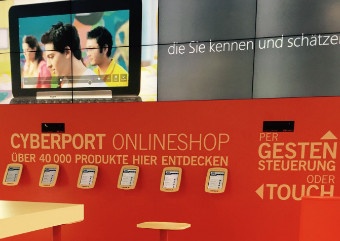 | 1. Cyberport
Cyberport’s approach focuses on placing a large number of kiosks in an eye-catching position in store, but it is not possible to purchase products online in the store. With their large rear panels and coloured walls, the kiosks are an eye-catching feature of the store.
|
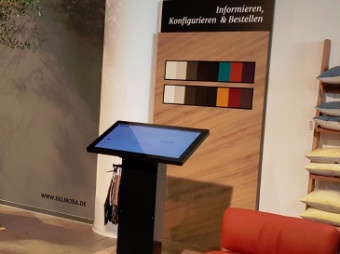 | 2. BelMoba
BelMoba is an online retailer of designer leather sofas with a new brick and mortar store in Munich, where the user-friendly kiosks are integrated into the atmosphere of the store. However, these only show the website. A large display, highly efficient touch function and a stable pedestal invite customers to browse. |
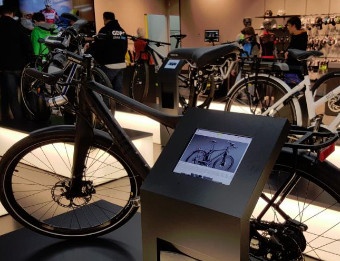 | 3. Biketown Rose
Biketown Rose offers a very good configuration software for the bikes, providing sales assistants with numerous cross-selling and upselling opportunities. The configuration stations are given a lot of space on the rear wall of the stylish store.
|
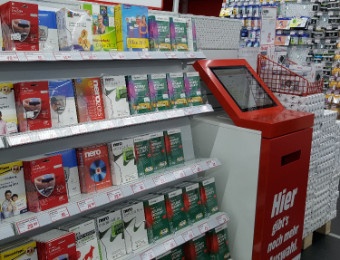 | 4. Media Markt
Media Markt shows availability of products in store, but there are no detailed product descriptions or suggestions for different options or alternatives. Products can be searched via categories and by entering key words. The databases are very slow, however. |
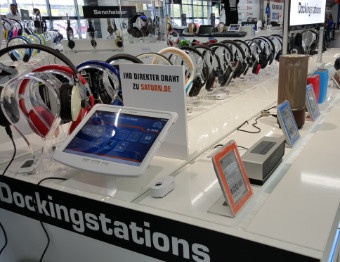 | 5. Saturn
Saturn has a sufficient number of tablets well placed throughout the store, but the kiosk system does not offer a search function. Customers have to click their way through several category trees before finding the product they want. This makes it very difficult to find certain items.
|
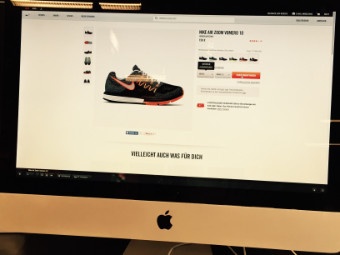 | 6. Nike Factory Store
By offering the possibility of generating personalised stylish designs, NIKEiD is aimed at encouraging customers to create and order a shoe in the colours they themselves would like. The webshop has not been optimised for use in brick and mortar stores, however. |
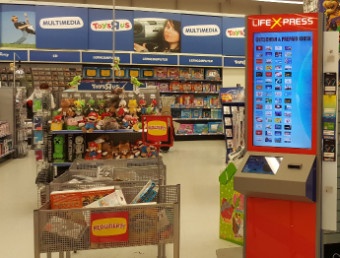 | 7. Toys"R"Us
Toys"R”Us offers a kiosk for digital products. A screen is integrated into the rear panel. Instructions on how to use the kiosk are shown as well as advertisements for the latest digital products. Products can be searched either via categories or directly using search terms. |
 | 8. my-eXtra - "The connected store"
Going by the name of “the connected store”, the my-eXtra store concept combines the advantages of the internet with the advantages of traditional retail premises. The focus is on the kiosk with the huge integrated product catalogue and the Online Kiosk which is synchronised with it. |
Important elements of the cross-channel business, which are among the key components of the connected store, are listed in connection with the individual test cases. These include multi-media product kiosks, a large catalogue with a marketplace function, payment and delivery processes, a connected online shop and digital signage.
DOWNLOAD CASE STUDIES "CROSS-CHANNEL IN STORE
Tuesday, 30. June 2015 -11:39










































